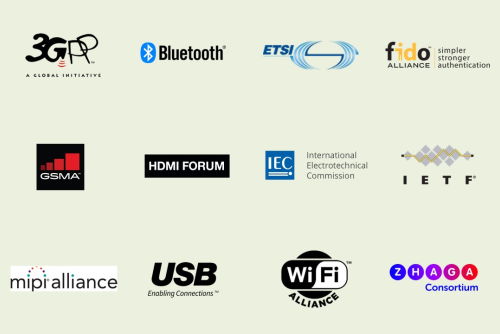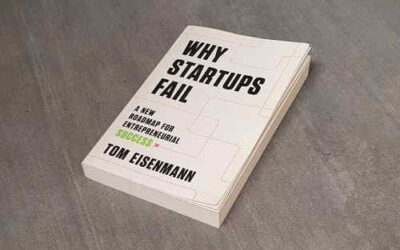Comparing the bylaws that govern standards organizations
This articles compares the bylaws of 12 standards organizations: 3GPP, Bluetooth SIG, ETSI, FIDO Alliance, GSMA, HDMI Forum, IEC, IETF, MIPI, USB IF, Wi-Fi Alliance, and Zhaga.
Table of Contents
- Similarity obscured by differences in terminology
- Rules about membership and voting rights
- 2.1 Which body is the highest authority in the organization?
- 2.2 Directors appointed as individual or as representative of a member?
- 2.3 Highest class membership gives right to appoint director in BoD?
- 2.4 Number of highest class members limited?
- 2.5 Competitors represented in BoD?
- 2.6 Can general assembly recall directors?
- 2.7 Restrictions on highest level membership based on company type?
- 2.8 New highest level member application needs approval/vote?
- Rules about Intellectual Property Rights (IPR Policy)
- The choice of legal entity
- 4.1 Type of legal entity
- 4.2 Applicable law
- 4.3 Non-Profit?
- Voting procedures in BoD, General Assembly, and work groups
- Some important differences
- References to bylaws and membership agreements
- 7.1 3GPP
- 7.2 Bluetooth SIG
- 7.3 ETSI
- 7.4 FIDO Alliance
- 7.5 GSMA
- 7.6 HDMI Forum
- 7.7 IEC
- 7.8 IETF
- 7.9 MIPI
- 7.10 USB IF
- 7.11 Wi-Fi Alliance
- 7.12 Zhaga Consortium
1. Similarity obscured by differences in terminology
Each standards organization has it own rules. This comparison of bylaws shows that the variation in rules is limited. High-level concepts are often the same although they are described with different terminology. The detailed voting rules show more variation.
The article compares the rules by mapping the terminology used by the organization on a harmonized set or terms. We use:
- “Bylaws” for the governance rules. Even though the rules may not be in a document called “Bylaws” but in a document called, for example, “Policy”, or “Working Procedure”.
- “Board of Directors” or “BoD” for the people who are responsible (have the fiduciary duty) for the cooperation’s legal entity.
- “General Assembly” for a meeting of highest level members.
The mapping for each organization is explained in section 7. “References to bylaws and membership agreements” at the end of this page.
This article analyzes only some aspects of the governance of standards organization. The focus is on the highest levels of the organization, less on how decisions are made in work groups and committees.
The analysis is necessarily incomplete and I may have misunderstood how some of the organizations are managed. Please contact me if you would like to see another aspect compared, another organization added to the list, or to correct mistakes.
2. Rules about membership and voting rights
We start the comparison of bylaws with voting rights. Is membership at the highest level restricted? Is it an organization in which everyone can participate with equal rights?
tion
2.2 Directors appointed as individual or as representative of a member?
Directors have a duty of care (fiduciary duty) for the legal entity of the organization. At the same time they are usually an employee of one of the members. The way the directors are appointed and replaced indicate the level of independence of the directors.
tion
2.3 Highest class membership gives right to appoint director in BoD?
Some organizations elect the directors in a meeting of the members. Other organizations give the highest class membership the right to appoint a director, usually in combination with limits in the number of members in the highest class, otherwise the number of directors may become too large.
tion
Organizational Partners can appoint representatives in the PCG. Only these representatives have voting rights in the PCG.
Members of the Steering Group are elected by the General Assembly.
2.4 Number of highest class members limited?
Is the highest level open to any company willing to pay the membership fee?
tion
2.5 Competitors represented in BoD?
Are competitors excluded from the Board of Directors? The organization is in essence a for-profit operation when the evolution of the standard is controlled by business partners.
tion
Competitors are represented in the Project Coordination Group (PCG)
Competitors are represented in the Steering Group
2.6 Can general assembly recall directors?
A director can usually be removed by the other directors. Is it also possible for the members to remove a director?
tion
Organizational Partners can appoint representatives in the PCG. They cannot be recalled by the General Assembly.
Members of the Steering Group can be recalled by the General Assembly.
2.7 Restrictions on highest level membership based on company type?
Most organizations require that members support the goals of the organization. It is a soft requirement that can, in practice, not be used to refuse a membership application.
Does the organization have restrictions that are objective and are really used in practice?
tion
Participants are individuals. No restrictions for individual participation.
2.8 New highest level member application needs approval/vote?
Rejecting an application for membership is a decision that must not be taken lightly, in particular when a competitor already participates at that highest level. Is approval required by vote of the current members?
tion
3. Rules about Intellectual Property Rights (IPR Policy)
Products that implement a standard may infringe some patents. The rules that give access to these essential patents are covered in this section of the comparison of bylaws.
3.1 RAND or Royalty-Free?
Organizations usually require that members make their essential patents available for use by other members. Their standards cannot be used without access to the essential patents. What are the conditions? There are roughly two main variants:
- “Reasonable And Non-Discriminatory terms and conditions (RAND). Sometimes also called “Fair Reasonable And Non-Discriminatory” or FRAND. Such license may require payment of a royalty.
- A royalty-free license. Also under RAND terms and conditions, but without the possibility to require payment of royalties.
tion
Unusual:
- HDMI may charge fees for the non-assertion and other rights
- Formerly Adopted Specifications excluded from the IPR rules.
3.2 Mandatory Disclosure of Essential Patents?
Some organizations require that members disclose their essential patents and patent applications that may become an essential patent, as part of the review and approval process of a new standard.
tion
3.3 Refusal to license essential patents possible?
Some organizations offer members the possibility to avoid patent license obligations.
tion
4. The choice of legal entity
Organizations need a legal entity for collecting membership fees, signing contracts, and for owning a trademark. The laws of the country and the type of legal entity give constraints for operation of organizations. This comparison of bylaws show the choices that have been made by these standards organizations.
4.1 Type of legal entity
There are many different variants.
tion
Services that require a legal entity will be provided by one of the Organizational Partners (e.g. ETSI).
4.2 Applicable law
Conflicts about the application of the bylaws may end up in court. The bylaws or membership agreement needs to specify the law that will be applied.
tion
4.3 Non-Profit?
It is difficult to justify that a standards organization operates for profit, and distributes these profits to the members.
For profit standards development is theoretically possible, probably by an organization that is managed by business partners and excludes competitors from partcipating at the highest level.
tion
5. Voting procedures in BoD, General Assembly, and work groups
This part of the comparison of bylaws dives into the details of voting procedures. The differences between organizations are bigger compared with other aspects.
5.1 Quorum rules
“Quorum” is the minimum number of participants that must be present in order to make decisions.
tion
In TSG and WG: 30% of members with voting rights
General Assembly: Four-Fifths of Promoter Members
BoD: 70%
IETF: not applicable. Decisions made by consensus on mailing lists
General Assembly: not specified in Bylaws
General Assembly: 2/3 of Promoter Members.
Work Group: 2/3 of members with voting rights
General Assembly: 2/3 of Sponsor Members
Steering Group: 65%
5.2 Rules for majority
Standards organizations have very different rules for determining the majority that is needed to approve a proposal. Not only the minimum percentages differ, but also the way “abstain” vote are treated. Some organizations disregard abstain votes in calculating the percentage in favor. Other organizations require that the number of affirmative votes is a percentage of the total number of votes cast (including abstain votes).
tion
General Assembly: more than 50%
BoD: two-thirds (2/3)
IETF: "rough consensus", meaning that a very large majority of those who care must agree.
General Assembly: not specified in Bylaws
WG: 2/3 of all members with voting rights must agree
General Assembly: 2/3 of Sponsor Members
Steering Group: more than 50%. Some decisions require 65%.
5.3 Voting rights depend on attendance?
Some organizations require that members attend meetings. Voting rights may be taken away when members do not attend.
tion
Work Groups: in-person attending two of the previous four Meetings
Work Groups: 2 out of three previous meetings
5.4 Confidential vote possible?
Votes can be open, by roll call or raise of hands. Some organizations allow confidential votes, also called “secret ballots”.
tion
Work Groups: yes
General Assembly: No
5.5 Proxy vote possible?
Is it allowed for a member to hand over voting rights to another member? That can be useful when meetings are held in person without the possibility to participate remotely.
tion
General Assembly: Yes
General Assembly: No
5.6 Rules for on-line meetings
Is it possible for the organization to make decisions with some or all members participating remotely using on-line meeting tools?
tion
PCG: not defined.
General Assembly: not mentioned
General Assembly: not specified
5.7 E-vote possible by BoD, General Assembly, Work Groups?
Traditionally called a “vote by correspondence” when paper ballots were distributed by mail. Today it is convenient to vote by email or by using electronic voting tools.
tion
PCG: not defined
BoD: yes, but requires unanimous written consensus.
General Assembly: not specified
General Assembly: yes
General Assembly: yes
5.8 Quorum rules for e-vote?
Are quorum rules for e-vote the same as for votes during a meeting? Some organizations rule that an e-vote, when issued to the official mailing list, allows all members to vote and is therefore considered to have met quorum requirement independent on the actual number of votes cast. Not voting is than equivalent to voting “abstain”.
tion
PCG: not defined.
BoD: 100% (unanimous written consent)
Participants: no minimum quorum
General Assembly: same as during meeting
General Assembly: same as during meeting
6. Some important differences
Some of the choices made in governance of standards organization have a particularly large influence on their way of working and culture. Differences that stand out in this comparison of bylaws are:
6.1 Restricting number of highest level members
Organizations like Bluetooth SIG limit access to the highest level membership. The advantage is that it creates stability. The disadvantage is that competitors are excluded from making the most important decisions. The sensitivity depends on the number. Seven seems small. Twenty will be unlikely to create anti-trust concerns.
6.2 Can the highest authority vote by email without requiring unanimous written consent?
Delaware, California, Oregon and Washington DC state law requires that directors of non-profit entities make decisions by unanimous written consent when the decision is not made during a meeting for which the directors were given proper notice. It is particularly inconvenient when directors live in different time zones all over the world.
It is worthwhile to structure the organization such that the highest level authority can make routine decisions by email.
There are two methods used by organizations in this analysis:
- Make it the goal of the legal entity to provide services to the standards organization, and authorize a separate group to decide everything except routine matters that must be, by law, dealt with by the BoD. That’s what IETF, FIDO, and Zhaga did. The BoD will have less need for e-votes.
- Chose a legal environment that is less restrictive on use of e-votes
6.3 RAND or Royalty-Free
This choice depends on the willingness of potential owners of essential patents to contribute to standards development. Organizations that require royalty-free licenses usually allow members to exclude a specific patent from this obligation, but that clause is rarely used in practice.
7. References to bylaws and membership agreements
This section provides links to webpages and governing documents used in the comparison of bylaws. Terminology mapping is provided when terminology used by the organization differs from the harmonized terms used in this article.
7.1 3GPP
The 3rd Generation Partnership Project (3GPP) unites seven telecommunications standard development organizations (ARIB, ATIS, CCSA, ETSI, TSDSI, TTA, TTC), known as “Organizational Partners” and provides their members with a stable environment to produce the Reports and Specifications that define 3GPP technologies.
Governing documents: https://www.3gpp.org/about-3gpp/about-3gpp
Main document: Working Procedures (7 March 2022)
Terminology mapping:
- Bylaws = 3GPP Working Procedures
- Board of Directors = 3GPP doesn’t have its own legal entity, or BoD. The Project Coordination Group (PCG) comes closest to the role of BoD.
- Highest level membership class = Organizational Partners
- General Assembly = Meeting of the Project Co-ordination Group (PCG)
7.2 Bluetooth SIG
The Bluetooth SIG is a global community of over 36,000 companies serving to unify, harmonize and drive innovation in the vast range of connected devices all around us.
Governing documents: https://www.bluetooth.com/about-us/governing-documents/
Main document: Bluetooth SIG Bylaws (17 May 2019)
The Promoter Member Agreement is not publicly available.
Terminology mapping:
- Highest level membership class = Promoter Member
- General Assembly = meeting of Members. Only Promoter Member have voting rights.
7.3 ETSI
ETSI is a European Standards Organization (ESO). ETSI is the recognized regional standards body dealing with telecommunications, broadcasting and other electronic communications networks and services.
Governing documents: https://www.etsi.org/about/our-operations
Main document: the ETSI Directives (1 December 2021)
Terminology mapping:
- Bylaws = ETSI Directives
7.4 FIDO Alliance
The FIDO Alliance is an open industry association with a focused mission: authentication standards to help reduce the world’s over-reliance on passwords.
Governing documents: https://fidoalliance.org/members/membership-application/
Main documents: the FIDO Alliance Bylaws (1 January 2020) and FIDO Alliance Membership Agreement (1 January 2020).
Terminology mapping:
- Highest level membership class = Board Member
- General Assembly = FIDO Board
- BoD = Executive Counsel = Statutory Committee
7.5 GSMA
The GSMA is a global organization unifying the mobile ecosystem to discover, develop and deliver innovation foundational to positive business environments and societal change. GSMA’s vision is to unlock the full power of connectivity so that people, industry, and society thrive. Representing mobile operators and organizations across the mobile ecosystem and adjacent industries, the GSMA delivers for its members across three broad pillars: Industry Services and Solutions, Connectivity for Good, and Outreach.
Governing documents: https://www.gsma.com/aboutus/legal/compliance
Main document: the GSMA Articles of Association (10 August 2020)
Terminology mapping:
- Bylaws = GSMA Articles of Association
- Board of Directors = Board
- General Assembly = General Meeting
7.6 HDMI Forum
The purpose of the HDMI Forum is to guide the future direction of HDMI technology, develop new versions of the HDMI Specification, and foster broader global adoption and interoperability.
Governing documents: https://hdmiforum.org/join-us/
Main document: the HDMI Forum Inc Bylaws (13 February 2018)
Terminology mapping:
- General Assembly = General Meeting
7.7 IEC
Founded in 1906, the IEC (International Electrotechnical Commission) is the world’s leading organization for the preparation and publication of international standards for all electrical, electronic and related technologies. These are known collectively as “electrotechnology”.
Governing documents: https://www.iec.ch/members_experts/refdocs/
Main document: the Statutes and Rules of Procedure (2021 edition)
Terminology mapping:
- Bylaws = Statutes and Rules of Procedure
- Board of Directors = IEC Board
7.8 IETF
The mission of the IETF is to make the Internet work better by producing high quality, relevant technical documents that influence the way people design, use, and manage the Internet.
The IETF Administration LLC (IETF LLC) provides the corporate legal home for the IETF, the Internet Architecture Board (IAB), and the Internet Research Task Force (IRTF).
Governing documents: https://www.ietf.org/about/administration/overview/
Main legal documents: LLC Agreement of IETF Administration LLC (27 August 2018) and the By-Laws of the Internet Society (17 May 2021)
The legal documents don’t explain how IETF makes decisions. The way of working in IETF is better explained in the Tao of IETF.
Terminology mapping:
- Bylaws = the Tao of IETF and the LLC Agreement of IETF Administration LLC
- Board of Directors = Board of IETF Administration LLC
- Highest level membership class = IETF doesn’t have members, only individual participants who don’t have to sign a membership agreement.
- General Assembly = meeting of participants
7.9 MIPI
MIPI Alliance is a collaborative global organization serving industries that develop mobile and mobile-influenced devices. The focus of the organization is to design and promote hardware and software interfaces that simplify the integration of components built into a device, from the antenna and modem to peripherals and the application processor.
Governing documents: https://www.mipi.org/about-us/structure-and-governance
Main document: the MIPI Alliance Bylaws (22 March 2019)
Operation of working groups within MIPI Alliance are described in the Group Procedures & Managing Group Status document.
This article uses the term “General Assembly” for the Annual or Special Meeting of members described in the Bylaws. Note that only the Founders and Promoter Members have voting rights in these meetings.
Terminology mapping:
- Board of Directors = Board
- Highest level membership class = Founders
- General Assembly = meeting of Members in which only Promoter Members and Founders have voting rights.
7.10 USB IF
USB Implementers Forum, Inc. is a non-profit corporation founded by the group of companies that developed the Universal Serial Bus specification. The USB-IF was formed to provide a support organization and forum for the advancement and adoption of Universal Serial Bus technology.
Governing documents: https://usb.org/about
Main documents: the Bylaws (15 December 2010) and the Device Working Group Procedures (revision 1.6.1).
Terminology mapping:
- Board of Directors = Board
- Highest level membership class = Promoter Members
- General Assembly = meetings of Members in which only Promoter Members have voting rights
7.11 Wi-Fi Alliance
Wi-Fi Alliance is the worldwide network of companies that brings you Wi-Fi®, one of the world’s most valued communications technologies. Our vision is to connect everyone and everything, everywhere.
Governing documents: https://www.wi-fi.org/who-we-are/governing-documents
Main document: the Bylaws
Terminology mapping:
- Board of Directors = Board
- Highest level membership class = Sponsor Members
- General Assembly = meetings of Members. Decisions of that meeting must be approved by Sponsor Members
7.12 Zhaga Consortium
Zhaga is a global lighting-industry organization that aims to standardize interfaces of components of LED luminaires, including LED light engines, LED modules, LED arrays, holders, electronic control gear (LED drivers), connectors and sensing/communication modules.
Governing documents: https://zhagastandard.org/about-us/legal-documents.html
Main document: the New Zhaga Consortium Agreement
Terminology mapping:
- Bylaws = New Zhaga Consortium Agreement
- Board of Directors = Zhaga doesn’t have its own legal entity, or BoD. The Steering Group (SG) comes closest to the role of BoD.
- Highest level membership class = Regular Member




